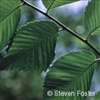Slippery elm
Red elm; Sweet elm; Ulmus fulva; Ulmus rubra
Slippery elm ( Ulmus fulva ) has been used as an herbal remedy in North America for centuries. Native Americans used slippery elm in healing salves for wounds, boils, ulcers, burns, and skin inflammation. It was also taken orally to relieve coughs, sore throats, diarrhea, and stomach problems.
Slippery elm contains mucilage, a substance that becomes a slick gel when mixed with water. It coats and soothes the mouth, throat, stomach, and intestines. It also contains antioxidants that help relieve inflammatory bowel conditions. Slippery elm causes reflux stimulation of nerve endings in the gastrointestinal tract leading to increased mucus secretion. The increased mucus production may protect the gastrointestinal tract against ulcers and excess acidity.
There has been little scientific research on slippery elm, but it is often suggested for the following conditions:
- Sore throat
- Cough
- Gastroesophageal reflux disease (GERD)
- Crohn's disease, ulcerative colitis, and irritable bowel syndrome (IBS)
- Diarrhea
- Wounds, burns, boils, psoriasis, and other skin conditions (external)
Plant Description
Slippery elm is a medium-sized tree native to North America. It can reach well over 50 feet in height and is topped by spreading branches that form an open crown. The red, brown, or orange branches grow downward, and the stalkless flowers are arranged in dense clusters. The plant's leaves are long and green, and they darken in color during the fall. The bark has deep fissures, a gummy texture, and a slight but distinct odor.
Parts Used
The inner bark is dried and powdered, and used for medicinal purposes.
Available Forms
Available forms of slippery elm include the following:
- Tablets and capsules
- Lozenges
- Finely powdered bark for making teas or extracts
- Coarsely powdered bark for poultices
How to Take It
PediatricGive slippery elm to a child only under the supervision of a knowledgeable practitioner. Dosage is usually dependent on weight.
AdultSpeak to your health care practitioner regarding the appropriate dose.
Precautions
The use of herbs is a time-honored approach to strengthening the body and treating disease. Herbs, however, can trigger side effects and can interact with other herbs, supplements, or medications. For these reasons, you should take herbs with care, under the supervision of a health care provider.
Slippery elm is not known to have serious side effects. Because it coats the digestive tract, it may slow down the absorption of other drugs or herbs. You should take slippery elm 2 hours before or after other herbs or medications you may be taking.
Some scientists think slippery elm is safe in pregnancy and during breastfeeding, but no scientific studies have been done to confirm this. The outer bark of the elm tree may contain substances that could increase the risk of miscarriage, so sometimes pregnant women are advised to avoid slippery elm. There is some folk herbal history that Slippery elm may cause miscarriage, however, it is unclear whether this refers to the practice of inserting Slippery elm preparation vaginally or taking the herb orally. DO NOT take any herbal supplements when pregnant or breastfeeding unless you're under a provider's supervision.
Possible Interactions
There are no scientific reports of slippery elm interacting with any other medications, although it may slow down the absorption of other drugs or herbs (see " Precautions " section).
Supporting Research
Bock S. Integrative medical treatment of inflammatory bowel disease. Int J Integr Med . 2000;2:21-29.
Brown AC, Hairfield M, Richards DG, McMillin DL, Mein EA, Nelson CD. Medical nutrition therapy as a potential complementary treatment for psoriasis -- five case reports. Altern Med Rev . 2004;9:297-307.
Hawrelak JA, Myers SP. Effects of two natural medicine formulations on irritable bowel syndrome symptoms: a pilot study. J Altern Complement Med . 2010;16:1065-1071.
Langmead L, Dawson C, Hawkins C, Banna N, Loo S, Rampton DS. Antioxidant effects of herbal therapies used by patients with inflammatory bowel disease: an in vitro study. Aliment Pharmacol Ther . 2002;16:197-205.
Rakel D. Integrative Medicine . 3rd ed. Philadelphia, PA: Elsevier Saunders; 2012.
Rotblatt M, Ziment I. Evidence-based Herbal Medicine . Philadelphia, PA: Hanley & Belfus, Inc.; 2202:337-338.
Review Date: 1/1/2017
Reviewed By: Steven D. Ehrlich, NMD, Solutions Acupuncture, a private practice specializing in complementary and alternative medicine, Phoenix, AZ. Review provided by VeriMed Healthcare Network. Also reviewed by the A.D.A.M. Editorial team.

